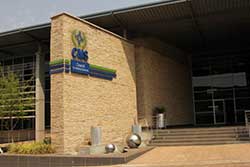JOHANNESBURG – If medical schemes invested more assets into equity and property – and less into cash and bonds – they would not have to rely so heavily on member contributions to build reserves, according to head of Alexander Forbes Health, Roshan Bhana, who says that schemes are missing a “simple trick” by investing so conservatively.
Bhana was speaking at the launch of Diagnosis 2015/2016 – Alexander Forbes Health’s annual medical schemes overview.
The review finds that of the ten largest open and restricted (limited to a certain employer or group of people) medical schemes in South Africa, the average equity allocation for open schemes in 2014 was just 15.4%, with 50.9% of assets held in cash.
Restricted schemes held 17.5% in equities and 53% in cash or cash equivalents.
With reserves of close to R12 billion, according to Bhana, Discovery Health Medical Scheme (DHMS) held more than 90% of assets in cash and bonds, while the Government Employees Medical Scheme (GEMS) held 100% of its R4 billion reserves in cash and cash equivalents.
“One has to ask whether that is an efficient allocation of resources,” Bhana commented.
With just 8.5 million people (out of a population of more than 50 million) on private medical aid in South Africa (including principal and dependent members), DHMS and GEMS hold 49% of the medical schemes market, according to Alison Counihan, head of actuarial at Alexander Forbes Health.
In terms of the Medical Schemes Act (MSA), medical schemes can hold 40% of their assets in equities and 10% in property.
While some schemes may be hesitant to take on more equity exposure, since one bad year could place pressure on solvency, Bhana said that even those schemes with comparatively high solvency levels are not taking on additional equity risk.
With a more aggressive investment strategy, schemes are more likely to be sustainable in the long-term, because equity performance will ensure their level of investment grows in line with or ahead of their contribution increases,” Bhana maintained.
A medical scheme’s solvency level refers to the percentage of annual gross contribution income (GCI) that it has in reserve. The MSA dictates that this should be at least 25%.
Discovery has a solvency level of 25%, with GEMS at just 10%.
Medical inflation cause for concern
Considering what medical inflation has done over the past 15 years, medical schemes would clearly benefit from greater investment income, which is not typically earned by investing in inflation-linked money market or bond funds.
Between 2000 and 2014, consumer price inflation (CPI) averaged 5.8% per year, while medical scheme contribution inflation averaged 7.6% per year and medical care and health expenses inflation grew by on average 7.8% per year, according to data from Statistics SA.
This graphs shows the latest CPI figures against the average contribution increases for 2016.
Contributions to medical schemes, although above CPI, haven’t actually kept pace with the rising costs of medical care, driven in part by increases in the cost of doctors and specialists, new medical technologies and a population that is living longer and requires more medical care.
New solvency regs may help
Bhana believes that expected changes to solvency regulations, which are expected to better account for different scheme profiles and risk exposures, will require the majority of medical schemes to hold less than the current 25% in reserve and thereby encourage investment into higher-risk, higher-return assets.
“Already we can see the industry is overfunded and is currently holding about R15 billion to R20 billion above what they need to hold in reserve. Changing the solvency measure will free up capital for more aggressive investments or enhanced benefits,” Bhana maintained.
The Industry Technical and Advisory Panel (ITAP) has been involved in developing an alternative measure of solvency, but more work is required to take into account the full spectrum of risks faced by medical schemes, according to Bhana.
The graph below shows each scheme’s current solvency level against the 25% statutory minimum, as well as what they would be required to hold under the ITAP risk-based formula.

